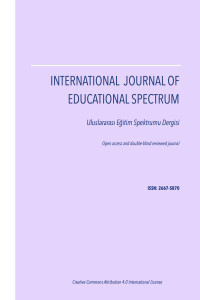Öğretmen öz yeterliğinin İngilizce öğretimindeki rolü
<!--
/* Font Definitions */
@font-face
{font-family:"Cambria Math";
panose-1:2 4 5 3 5 4 6 3 2 4;
mso-font-charset:0;
mso-generic-font-family:roman;
mso-font-pitch:variable;
mso-font-signature:-536870145 1107305727 0 0 415 0;}
@font-face
{font-family:Calibri;
panose-1:2 15 5 2 2 2 4 3 2 4;
mso-font-charset:162;
mso-generic-font-family:swiss;
mso-font-pitch:variable;
mso-font-signature:-536859905 -1073732485 9 0 511 0;}
/* Style Definitions */
p.MsoNormal, li.MsoNormal, div.MsoNormal
{mso-style-unhide:no;
mso-style-qformat:yes;
mso-style-parent:"";
margin-top:0cm;
margin-right:0cm;
margin-bottom:10.0pt;
margin-left:0cm;
line-height:115%;
mso-pagination:widow-orphan;
font-size:11.0pt;
font-family:"Calibri",sans-serif;
mso-ascii-font-family:Calibri;
mso-ascii-theme-font:minor-latin;
mso-fareast-font-family:Calibri;
mso-fareast-theme-font:minor-latin;
mso-hansi-font-family:Calibri;
mso-hansi-theme-font:minor-latin;
mso-bidi-font-family:"Times New Roman";
mso-bidi-theme-font:minor-bidi;
mso-ansi-language:EN-US;
mso-fareast-language:EN-US;}
.MsoChpDefault
{mso-style-type:export-only;
mso-default-props:yes;
font-size:11.0pt;
mso-ansi-font-size:11.0pt;
mso-bidi-font-size:11.0pt;
font-family:"Calibri",sans-serif;
mso-ascii-font-family:Calibri;
mso-ascii-theme-font:minor-latin;
mso-fareast-font-family:Calibri;
mso-fareast-theme-font:minor-latin;
mso-hansi-font-family:Calibri;
mso-hansi-theme-font:minor-latin;
mso-bidi-font-family:"Times New Roman";
mso-bidi-theme-font:minor-bidi;
mso-fareast-language:EN-US;}
.MsoPapDefault
{mso-style-type:export-only;
margin-bottom:10.0pt;
line-height:115%;}
@page WordSection1
{size:612.0pt 792.0pt;
margin:70.85pt 70.85pt 70.85pt 70.85pt;
mso-header-margin:35.4pt;
mso-footer-margin:35.4pt;
mso-paper-source:0;}
div.WordSection1
{page:WordSection1;}
-->
Bu çalışmanın temel amacı orta
öğretimde çalışan İngilizce öğretmenlerinin özyeterlik seviyelerini bulmaktır.
Ayrıca katılımcı öğretmenlerin kendi İngilizce dil becerilerine yönelik
inançları ve İngilizce öğretirken kullandıkları pedagojik stratejileri
hakkındaki bildirimleri de çalışmada veri olarak kullanılmıştır. Nicel
araştırma yöntemine dayalı bu çalışmada, veri üç farklı anket aracılığıyla
devlet okullarının orta öğretim kademesinde çalışan 28 öğretmenden
toplanmıştır. Sonuçlar öğretmen öz yeterliğinin İngilizce öğretimi üzerinde
etkisi olduğunu göstermiştir. Elde edilen veriler öğretmen öz yeterliği ile
öğretmenlerin İngilizce yeterliği arasında ilişki olduğunu göstermiştir.
Öğretmenlerin çoğunun sınıflarında iletişime dayalı stratejiler kullandıkları tespit
edilmiştir. Bu çalışma öğretmenlerin öz yeterliğini geliştirmek için nelere
ihtiyaç duyduklarını anlamak için gerekli ve faydalı bilgi sağlamaktadır.
Anahtar Kelimeler:
öğretmen, öğretmen öz yeterliliği, yabancı dil olarak İngilizce, İngilizce dili öğretimi, İngilizce yeterliliği
The role of teacher efficacy over English language teaching
<!--
/* Font Definitions */
@font-face
{font-family:"Cambria Math";
panose-1:2 4 5 3 5 4 6 3 2 4;
mso-font-charset:0;
mso-generic-font-family:roman;
mso-font-pitch:variable;
mso-font-signature:-536870145 1107305727 0 0 415 0;}
@font-face
{font-family:Calibri;
panose-1:2 15 5 2 2 2 4 3 2 4;
mso-font-charset:162;
mso-generic-font-family:swiss;
mso-font-pitch:variable;
mso-font-signature:-536859905 -1073732485 9 0 511 0;}
/* Style Definitions */
p.MsoNormal, li.MsoNormal, div.MsoNormal
{mso-style-unhide:no;
mso-style-qformat:yes;
mso-style-parent:"";
margin-top:0cm;
margin-right:0cm;
margin-bottom:10.0pt;
margin-left:0cm;
line-height:115%;
mso-pagination:widow-orphan;
font-size:11.0pt;
font-family:"Calibri",sans-serif;
mso-ascii-font-family:Calibri;
mso-ascii-theme-font:minor-latin;
mso-fareast-font-family:Calibri;
mso-fareast-theme-font:minor-latin;
mso-hansi-font-family:Calibri;
mso-hansi-theme-font:minor-latin;
mso-bidi-font-family:"Times New Roman";
mso-bidi-theme-font:minor-bidi;
mso-ansi-language:EN-US;
mso-fareast-language:EN-US;}
.MsoChpDefault
{mso-style-type:export-only;
mso-default-props:yes;
font-size:11.0pt;
mso-ansi-font-size:11.0pt;
mso-bidi-font-size:11.0pt;
font-family:"Calibri",sans-serif;
mso-ascii-font-family:Calibri;
mso-ascii-theme-font:minor-latin;
mso-fareast-font-family:Calibri;
mso-fareast-theme-font:minor-latin;
mso-hansi-font-family:Calibri;
mso-hansi-theme-font:minor-latin;
mso-bidi-font-family:"Times New Roman";
mso-bidi-theme-font:minor-bidi;
mso-fareast-language:EN-US;}
.MsoPapDefault
{mso-style-type:export-only;
margin-bottom:10.0pt;
line-height:115%;}
@page WordSection1
{size:612.0pt 792.0pt;
margin:70.85pt 70.85pt 70.85pt 70.85pt;
mso-header-margin:35.4pt;
mso-footer-margin:35.4pt;
mso-paper-source:0;}
div.WordSection1
{page:WordSection1;}
-->
<!--
/* Font Definitions */
@font-face
{font-family:"Cambria Math";
panose-1:2 4 5 3 5 4 6 3 2 4;
mso-font-charset:0;
mso-generic-font-family:roman;
mso-font-pitch:variable;
mso-font-signature:-536870145 1107305727 0 0 415 0;}
@font-face
{font-family:Calibri;
panose-1:2 15 5 2 2 2 4 3 2 4;
mso-font-charset:162;
mso-generic-font-family:swiss;
mso-font-pitch:variable;
mso-font-signature:-536859905 -1073732485 9 0 511 0;}
/* Style Definitions */
p.MsoNormal, li.MsoNormal, div.MsoNormal
{mso-style-unhide:no;
mso-style-qformat:yes;
mso-style-parent:"";
margin-top:0cm;
margin-right:0cm;
margin-bottom:10.0pt;
margin-left:0cm;
line-height:115%;
mso-pagination:widow-orphan;
font-size:11.0pt;
font-family:"Calibri",sans-serif;
mso-ascii-font-family:Calibri;
mso-ascii-theme-font:minor-latin;
mso-fareast-font-family:Calibri;
mso-fareast-theme-font:minor-latin;
mso-hansi-font-family:Calibri;
mso-hansi-theme-font:minor-latin;
mso-bidi-font-family:"Times New Roman";
mso-bidi-theme-font:minor-bidi;
mso-ansi-language:EN-US;
mso-fareast-language:EN-US;}
.MsoChpDefault
{mso-style-type:export-only;
mso-default-props:yes;
font-size:11.0pt;
mso-ansi-font-size:11.0pt;
mso-bidi-font-size:11.0pt;
font-family:"Calibri",sans-serif;
mso-ascii-font-family:Calibri;
mso-ascii-theme-font:minor-latin;
mso-fareast-font-family:Calibri;
mso-fareast-theme-font:minor-latin;
mso-hansi-font-family:Calibri;
mso-hansi-theme-font:minor-latin;
mso-bidi-font-family:"Times New Roman";
mso-bidi-theme-font:minor-bidi;
mso-fareast-language:EN-US;}
.MsoPapDefault
{mso-style-type:export-only;
margin-bottom:10.0pt;
line-height:115%;}
@page WordSection1
{size:612.0pt 792.0pt;
margin:70.85pt 70.85pt 70.85pt 70.85pt;
mso-header-margin:35.4pt;
mso-footer-margin:35.4pt;
mso-paper-source:0;}
div.WordSection1
{page:WordSection1;}
-->
The main purpose of this study is
to examine teacher efficacy levels of English language teachers who work in
secondary schools. Also, teachers’ self -reported English proficiency level and
use of pedagogical strategies were investigated. Based on a quantitative study,
the data were collected through three different questionnaires from 28 English
language teachers. Results showed that teacher efficacy has an impact on
teaching English. The data indicated that teachers’ beliefs in their ability
were correlated with their self-reported English proficiency. It was found that
most of the teachers use communicatively oriented instructional strategies in
the classroom. This study provides necessary and useful information to
understand teachers’ needs to develop their efficacy.
Keywords:
teacher, teacher efficacy, English as a foreign language, English language teaching, English proficiency,
___
- Bandura, A. (1997). Self-efficacy: the exercise of control. New York: W. H. Freeman and Company.
- Berman, P., McLaughlin, M., Bass, G., Pauly, E., & Zellman, G. (1997). Federal Programs Supporting Educational Change: Vol. VII. Factors Affecting Implementation and Continuation (Report No. R-1589/7-HEW). Santa Monica, CA: RAND.
- Carey, K. (2004). The Real Value of Teachers: Using New Information about Teacher Effectiveness to Close the Achievement Gap. Thinking K16, 8(1), 3-42.
- Capa, Y., Cakıroglu, J. & Sarıkaya, H. (2005). Öğretmenlik Özyeterlik Ölçeği Geçerlik ve Güvenirlik Çalışması. Eğitim ve Bilim, 30(137), 74-81.
- Castillo J. (2009). Convenience Sampling. Retrieved 17 January 2013 from http://explorable.com/convenience-sampling.html
- Chacon, C. T. (2005). Teachers’ perceived efficacy among English as a foreign language teachers in middle schools in Venezuela. Teaching and Teacher Education, 21(3), 257-272.
- Eslami, Z. R., & Fatahi, A. (2008). Teachers’ Sense of Self-efficacy, English Proficiency, and Instructional strategies: A study of nonnative EFL teachers in Iran. TESL-EJ, 11(4).
- Fraenkel, J.R., & Wallen, N. E. (2005). How to Design and Evaluate Research in Education. Mcgrawhill. New York.
- Guskey, T. R., & Passaro, P. D. (1994). Teacher efficacy: A Study of Construct dimensions. American Educational Research Journal, 31(3), 627-643.
- Melby, L. C. (1995). Teacher efficacy and classroom management: A study of teacher cognition, emotion, and strategy usage associated with externalizing student behavior (Doctoral dissertation, University of California, Los Angeles, 1995). Dissertation Abstracts International, 56-10A, 3890.
- Ozder, H. (2011). Self-efficacy Beliefs of Novice Teachers and Their Performance in the classroom. Australian Journal of Teacher Education, 36(5).
- Richards J. C. (2006). Communicative language teaching today. Cambridge University Press. New York.
- Ross, J. A. (1998). Antecedents and Consequences of Teacher Efficacy. Advances in Research on Teaching, 7, 49-74. Greenwich, CT: TAI Press.
- Sak, G. (2011). Türkiye İngilizce Konuşamıyor. Retrieved 19 January 2013 from, http://www.radikal.com.tr/Radikal.aspx?aType=RadikalYazar&ArticleID=1048424& CategoryID=101.
- Tschannen-Moran, M. and Woolfolk Hoy, A. (2001) Teacher efficacy: capturing an elusive Construct. Teaching and Teacher Education, 17, 783-805.
- Williams, M. & Burden, R.L. (1997). Psychology for Language Teachers: A Social Constructivist Approach. Cambridge: Cambridge University Press.
- Yılmaz, C. (2011). Teachers’ Perceptions of Self-efficacy, English proficiency, and Instructional Strategies. Social Behavior and Personality, 39(1), 91-100.
- ISSN: 2667-5870
- Yayın Aralığı: Aylık
- Yayıncı: Hakan ULUM
